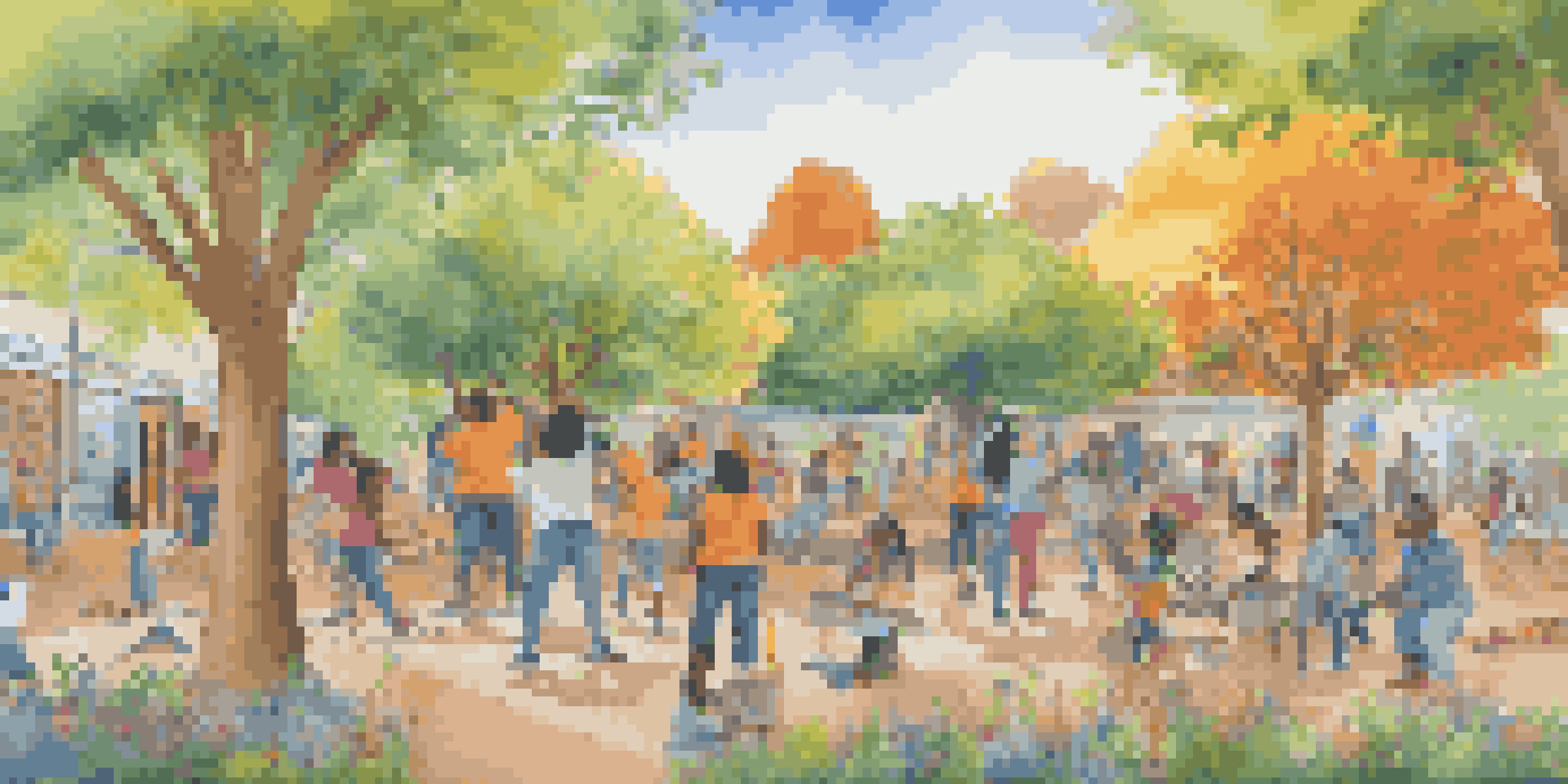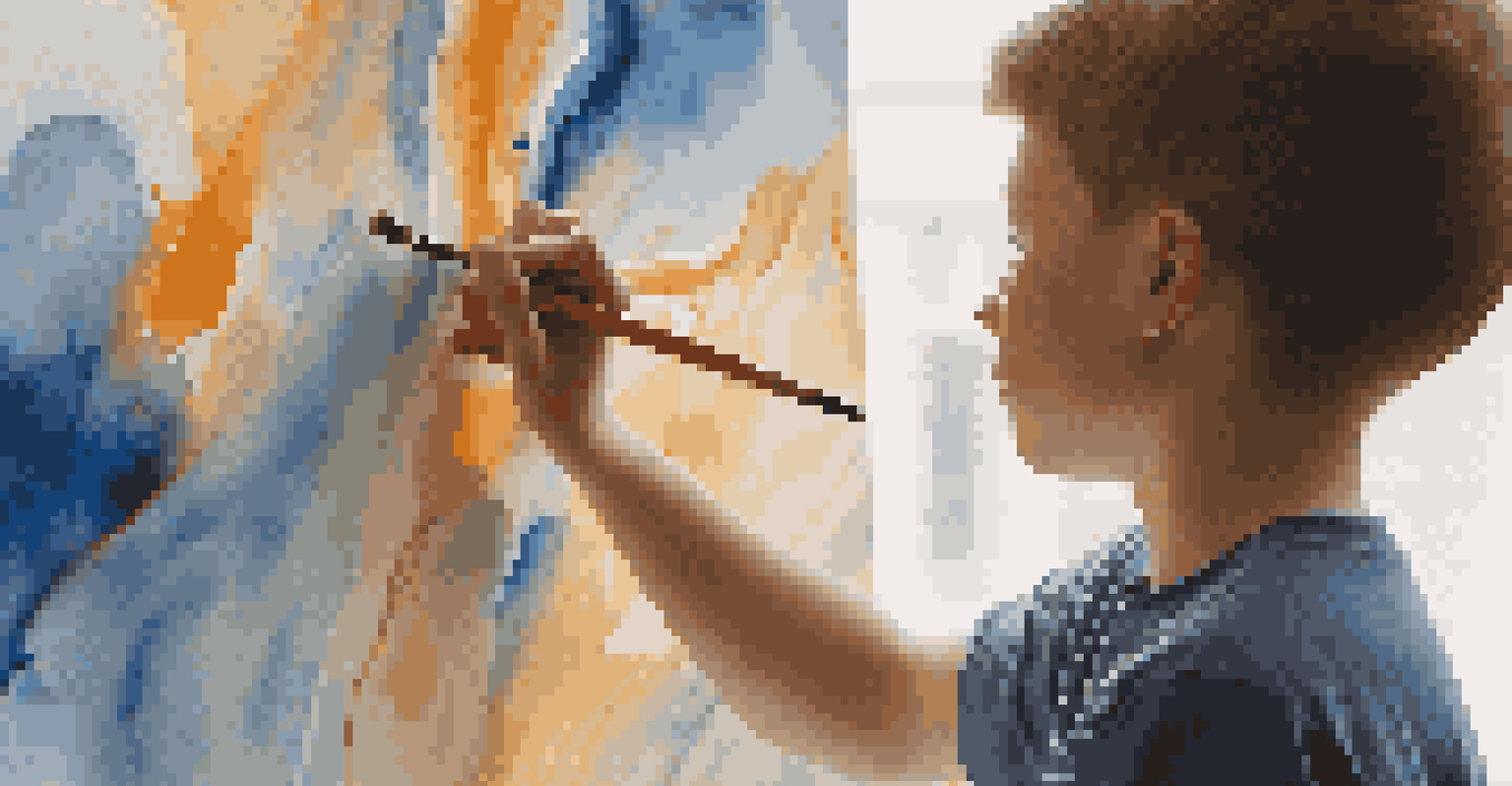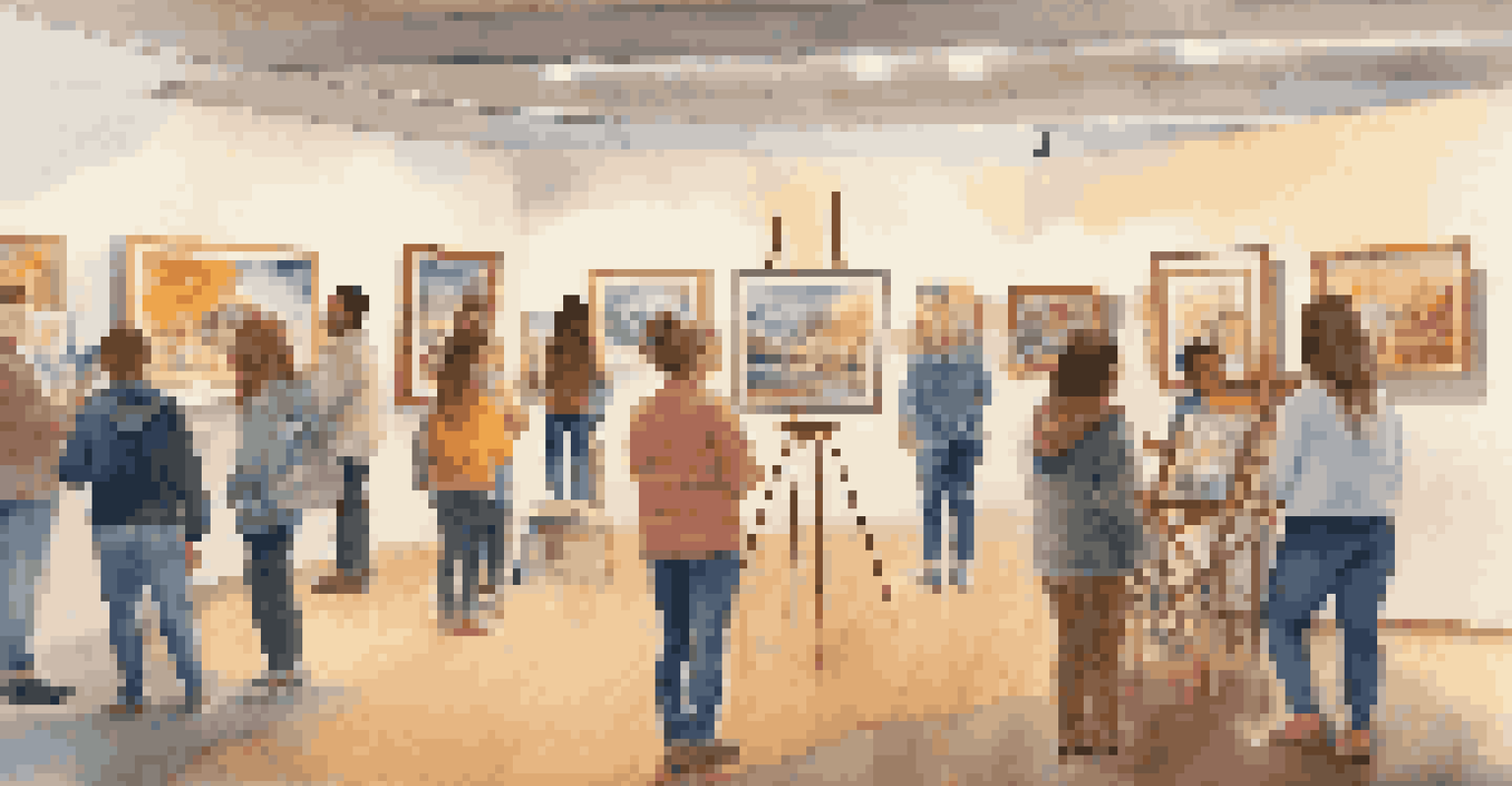Art Initiatives: Engaging Youth in Resilience Through Creativity

The Importance of Resilience in Youth Development
Resilience is a crucial trait for young people, helping them navigate life's challenges and uncertainties. It enables them to bounce back from setbacks, adapt to change, and maintain a positive outlook. When youth cultivate resilience, they're better equipped to handle stress and pursue their goals more effectively.
Art enables us to find ourselves and lose ourselves at the same time.
Art initiatives serve as a powerful medium for fostering this resilience. Through creative expression, young people can explore their emotions, confront challenges, and develop coping strategies. Activities like painting, theater, or music not only provide an outlet for feelings but also encourage problem-solving and critical thinking.
Moreover, engaging in the arts can create a sense of belonging and community. When youth participate in collaborative projects, they build strong relationships and support networks, which are essential for their emotional well-being. This communal aspect of art initiatives enriches their resilience-building journey.
Art as a Tool for Emotional Expression
Art provides a unique platform for youth to express their emotions, especially when words fail them. Through various art forms, they can convey feelings of joy, anger, sadness, and hope, allowing for a deeper understanding of their inner experiences. This process can be incredibly therapeutic, enabling them to release pent-up emotions and reduce anxiety.

For instance, a young person might choose to paint their feelings about a difficult family situation. This artistic process not only helps them articulate their emotions but also facilitates healing. Such initiatives can pave the way for personal growth and self-discovery, as youth learn to navigate their emotional landscapes.
Resilience Through Art Initiatives
Art initiatives help youth build resilience by providing creative outlets for emotional expression and community connections.
Additionally, art can foster empathy and compassion. By creating and sharing their artwork, young people can connect with others who may have similar experiences. This shared understanding can be a powerful catalyst for building resilience, as they realize they are not alone in their struggles.
Community Engagement Through Art Initiatives
Community engagement plays a pivotal role in art initiatives aimed at youth resilience. By involving local artists, organizations, and schools, these initiatives create a sense of ownership among participants. When young people feel their contributions matter, they are more likely to engage fully and take pride in their work.
Every artist was first an amateur.
For example, community mural projects allow youth to collaborate with local artists, transforming public spaces while also building their skills. These projects not only beautify neighborhoods but also instill a sense of pride and accomplishment in the young artists. This active participation fosters a sense of belonging and strengthens community ties.
Moreover, such initiatives often address social issues, prompting discussions that empower youth to raise their voices. By sharing their stories through art, they can advocate for change and inspire others. This engagement not only builds resilience but also nurtures future leaders who are socially aware and active.
Developing Skills for the Future
Art initiatives do more than just promote emotional well-being; they also help young people develop vital life skills. Through creative projects, youth learn discipline, time management, and teamwork—skills that are essential for future academic and career success. These experiences provide a foundation for personal and professional growth.
For instance, participating in a theater production requires collaboration, communication, and commitment. Each young person must learn their lines, work with others, and contribute to the overall performance. This not only enhances their artistic abilities but also prepares them for real-world situations where teamwork and responsibility are crucial.
Skills Development via Creativity
Participating in art projects equips young people with essential life skills like teamwork, discipline, and critical thinking.
Additionally, art initiatives often encourage critical thinking and innovation. As young people experiment with different mediums and techniques, they learn to approach problems from various angles. This creative problem-solving skill is invaluable, equipping them to tackle challenges head-on in their future endeavors.
Building Confidence Through Creative Expression
Engaging in art initiatives can significantly boost a young person's self-confidence. When they create something meaningful and share it with others, it validates their abilities and fosters a sense of accomplishment. This confidence can spill over into other areas of their lives, encouraging them to take on new challenges.
For example, a shy teenager who participates in a poetry slam might find their voice and gain the courage to express themselves publicly. The support and encouragement from peers can reinforce their belief in their capabilities, making them more willing to step outside their comfort zones in the future.
Moreover, receiving positive feedback on their artistic endeavors can further enhance their self-esteem. This affirmation helps them realize their unique perspectives are valuable and worthy of sharing. As their confidence grows, so does their resilience, enabling them to face life's hurdles with greater assurance.
The Role of Mentorship in Art Initiatives
Mentorship is a critical component of successful art initiatives, providing young people with guidance and support. Experienced artists and educators can share their knowledge and skills, helping youth refine their craft and navigate the challenges of the creative process. This relationship can be transformative, fostering growth and resilience.
For instance, a mentor might work with a young painter to explore different techniques and styles, encouraging experimentation and risk-taking. As the mentee develops their skills, they also gain valuable insights into the art world and potential career paths. This exposure can inspire them to pursue their passions with confidence.
The Impact of Mentorship
Mentorship in art initiatives offers guidance and support, helping youth grow their skills while fostering resilience and confidence.
Additionally, mentors often serve as role models, demonstrating perseverance and dedication. Their stories of overcoming obstacles can motivate young people to persist in their own artistic journeys. By fostering these connections, art initiatives can create a supportive environment that nurtures resilience and creativity.
Celebrating Artistic Achievements and Resilience
Celebrating the artistic achievements of youth is essential for reinforcing their resilience and commitment to creativity. Exhibitions, performances, and showcases provide opportunities for young artists to share their work with the community. These events not only highlight their talents but also affirm their hard work and dedication.
For example, a community art show featuring the work of local youth can draw attention to their creativity and unique perspectives. This recognition not only boosts their confidence but also encourages continued participation in the arts. It helps them see the value of their contributions and the impact of their creativity.

Moreover, celebrating these achievements fosters a sense of pride within the community. It reinforces the idea that art is a vital part of cultural expression and resilience. By honoring the creative efforts of young people, we inspire future generations to embrace their artistic voices and contribute positively to society.